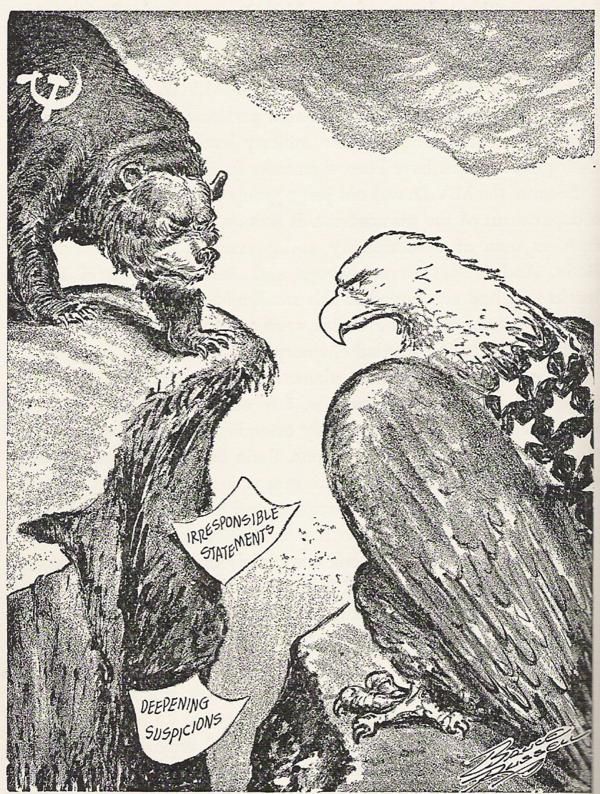I thought it would be an interesting look into our nation's political cartoon history if, this month, I took a look at a different editorial cartoon each day that won the Pulitzer Prize for Editorial Cartooning. Do note that we're talking basically 1922-1967 here, as since then, the Committee has almost always awarded cartoonists generally for their work, not for an exemplary single cartoon. So in many ways, this is a snapshot of American politics (for better or for worse) over a forty-five year period. Here is an archive of the cartoons featured thus far.
Today we look at Bruce Russell's 1946 award-winning cartoon.
Enjoy!
I've decided to finish off this month-long examination of Pulitzer Prize winning cartoons with two cartoons examining perhaps the most popular theme of all the cartoons featured in the years 1922-1967, and that is the relationship between the United States and Communism, which seems to be the basis for about a third of the cartoons that won a Pulitzer Prize between 1922 and 1967 (that is if we count the cartoons about the threat of Nuclear War as being about "U.S. vs. Communism," which I think is fair enough).
Today's cartoon comes from Bruce Russell (born in Los Angeles in 1903), who became a sports cartoonist for the Los Angeles Times in 1927. He also did a nationally syndicated comic strip called Rollo Rollingstone during the early 30s. After ending Rollingstone, he became the lead editorial cartoonist for the L.A. Times in 1934, a position Rusell held for almost three decades, ending only in his death in 1963 of a heart attack.
The cartoon was printed in November of 1945, and it is quite telling that in the year that World War II ended, the Pulitzer Prize winning cartoon was not about the end of the War, but rather of the BEGINNING of the Cold War between the United States and the Soviet Union.
Russell titled the work "Time to Bridge the Gulch"...
Sadly, the gulch would not be bridged for decades to come.
That's some very impressive linework on Russell's part.


